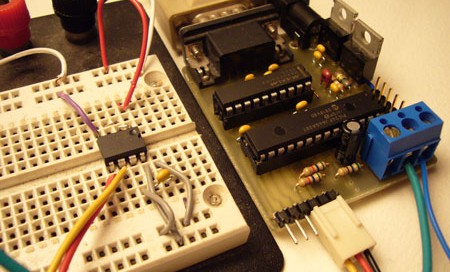
[Lynne] had this crazy idea to build a piece of clothing that would give you feedback about your surroundings using sonar. She started with a carefully selected thrift store jacket. She wanted something that looked good and also provided plenty of places to hide electronics. She used the LilyPad system, with a vibration pad and a sonar range finder. When the system detects an object within a certain distance directly in front of the wearer, it warns them with some vibration. Not only is it practical, it looks pretty cool too. Did we mention she designs clothing?
She notes, in the comments section, that while it can detect an obstacle, it cannot detect a void. How could she detect a drop in the floor or a step down?















